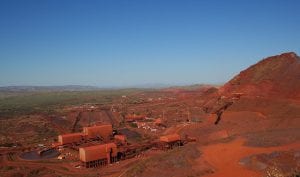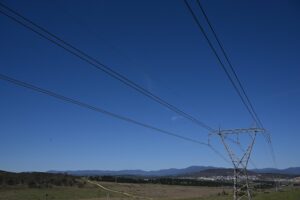 The warnings of blackouts provoked by the imminent closure of the Hazelwood brown coal generator in Victoria– already so prevalent on right wing blogs, the Murdoch media and the ABC – reached fever pitched proportions on Thursday.
The warnings of blackouts provoked by the imminent closure of the Hazelwood brown coal generator in Victoria– already so prevalent on right wing blogs, the Murdoch media and the ABC – reached fever pitched proportions on Thursday.
Fairfax Media led the front page of The Age newspaper (see image right) with an “exclusive” story that warned of 72 days of potential blackouts across the state over the next two summers.
“Victoria’s energy security has been thrown into question, with the state facing an unprecedented 72 days of possible power supply shortfalls over the next two years following the shutdown of the Hazelwood plant next week,” the story by Josh Gordon begins.
And how does it come to this breathless conclusion? Fairfax, like other media, such as the ABC’s political editor, Chris Uhlmann, is basing the forecasts of blackouts on this graph that appears on the website of the Australian Energy Market Operator.
It purports to show – in the light red at the top – the periods when Victoria could face a shortfall of supply. The graph for South Australia is even more dramatic. But is that really what is says? Blackouts all summer?
Not at all, says the AEMO – a reply they would happily give anyone who bothered to ask.
It actually shows the most extreme demand scenarios that it can think of – a one in ten year likelihood in this case – and graphs that over and above what it considers to be the “average” supply. Repeat. That is average supply, not total supply available.
Assuming this would lead to blackouts is a bit like saying that someone who walks to the ocean edge at low tide risks getting wet when the tide comes in, and they don’t move.
There is plenty of excess capacity that can meet that demand. This graph, is a section known as its Mtpasa forecasts, is basically a heads up that the tide will come in, and generator owners might want to think about maintenance planning, switching them on etc etc, to take it into account.
One source, who said he talked to Fairfax journalists “at length” trying to explain the graph, described the news story as “unbelievable”. But he also criticised AEMO for publishing a graph without any explanation of what it might mean.
Here is what the AEMO’s 50% demand scenario looks like for the same period. It shows a significant reduction in expected demand, which would be easily covered, even by “average” supply.
And here is an historical look at the last two months, plotting its 10 per cent probability demand with its 50 per cent probability demand, and what actually occurred.
AEMO says its “bible” on actual predictions of supply shortfalls is its Electricity Statement of Opportunities (ESOO), last released in November 2016, after the announced closure of Hazelwood, which can supply up to 20 per cent of the state’s demand.
It said then that some issues may arise, if the rest of the market did absolutely nothing. But if they walked back from ocean edge at low tide, or in this case actually increase generation from existing plants, as they would be expected to do, then there would be no issues.
As this graph shows, the forecasts of supply adequacy, with a market response, remains well within the guidelines.
Does this guarantee that there will be no blackouts? Not at all, because there’s no telling what sort of storms may occur that could bring down networks, or yet more failures of baseload fossil fuel plants.
Nor can we predict what the big generation companies will do, given that the market rules effectively allow them to manipulate prices by withdrawing capacity and playing what Spark Infrastructure – the owner of two of Victoria’s electricity networks – calls the “scarcity game”.
In its submission to the Finkel Review, Spark accuses fossil fuel generators of deliberately withholding capacity to push prices up. This puts the grid at risk. Often times, in NSW and in South Australia, the gas generators have failed when needed.
South Australia knows this well. In the recent heat wave, Engie, the company that also owns Hazelwood, chose not to fire up its Pelican Point gas plant, leaving tens of thousands of households and businesses, including many of its own customers, without power.
This is what is frustrating the South Australian government. The decision to put “profits before people” as premier Jay Weatherill described it last week, is behind their decision to build an emergency back up generator to fill in the gaps when the private sector refuses to do so.
Meanwhile, the idiotic and ignorant reporting in the mainstream media is allowing the fossil fuel generators and their protectors in the Coalition to blind public perceptions with complete nonsense. Fake news indeed.
For further reading about media’s recent performance..
How The Australian distorted S.A. renewables advice
ABC’s Uhlmann gets it wrong on renewables. Again
When will ABC stop parroting fossil fuel lobbyist lines?












